Fast Facts
- When: 16th to 19th May 2024
- Where: Valhalla Golf Club, Louisville, Kentucky, USA
- Watch: Sky Sports
- Official Website: PGA Championship
The PGA Championship makes up the second of the four majors played throughout every season. As the title suggests, the PGA of America are the founders and organisers of the event, which was previously known as the closing of the PGA Tour but has been moved to an earlier position in the calendar.
From an offers perspective we have the usual suspects offering up their standard fare – including extra places on pre-tournament each way bets, acca insurance and a couple of free bet specials.
Existing Customer Free Bets & Money Back Offers
Note: Offers will appear here nearer the event as and when they become available.
Stats Articles
- How Often is there a Hole-in-One on the PGA Tour?
- The Longest & Shortest Courses on the PGA Tour
- The Players Who Have Won the Most Majors in Golf - Can Jack Nicklaus' Record Ever be Beaten?
- Who Has the Longest Drive on the PGA Tour?
- Which Country Has Won the Most Majors in Golf?
- How Often Does The Favourite Win One Of Golf’s Majors?
- How Often Does the Third Round Leader Win a Golf Major?
- How Often Do The First Round Leaders Win a Golf Major?
- Golf Grand Slam Winners: Who Has Won All Four Majors?
Event Stats
2023 PGA Championship Top 10
| Position | Player | Prize Money | Score | R1 | R2 | R3 | R4 |
|---|---|---|---|---|---|---|---|
| 1 | Brooks Koepka (USA) | $3,150,000 | 271 (-9) | 72 | 66 | 66 | 67 |
| T2 | Viktor Hovland (NOR) | $1,540,000 | 273 (-7) | 68 | 67 | 70 | 68 |
| T2 | Scottie Scheffler (USA) | $1,540,000 | 273 (-7) | 67 | 68 | 73 | 65 |
| T4 | Cameron Davis (AUS) | $720,000 | 277 (-3) | 71 | 70 | 71 | 65 |
| T4 | Bryson DeChambeau (USA) | $720,000 | 277 (-3) | 66 | 71 | 70 | 70 |
| T4 | Kurt Kitayama (USA) | $720,000 | 277 (-3) | 70 | 71 | 71 | 65 |
| T7 | Rory McIlroy (NIR) | $555,000 | 278 (-2) | 71 | 69 | 69 | 69 |
| T7 | Sepp Straka (AUT) | $555,000 | 278 (-2) | 69 | 71 | 73 | 65 |
| T9 | Patrick Cantlay (USA) | $465,000 | 279 (-1) | 74 | 67 | 72 | 66 |
| T9 | Justin Rose (ENG) | $465,000 | 279 (-1) | 69 | 70 | 69 | 71 |
| T9 | Cameron Smith (AUS) | $465,000 | 279 (-1) | 72 | 72 | 70 | 65 |
2022 PGA Championship Top 10
| Position | Player | Prize Money | Score | R1 | R2 | R3 | R4 |
|---|---|---|---|---|---|---|---|
| 1 | Justin Thomas (USA) | $2,700,000 | 275 (-5) | 67 | 67 | 74 | 67 |
| 2 | Will Zalatoris (USA) | $1,620,000 | 275 (-5) | 66 | 65 | 73 | 71 |
| T3 | Mito Pereira (CHL) | $1,020,000 | 276 (-4) | 68 | 64 | 69 | 75 |
| T3 | Cameron Young (USA) | $1,020,000 | 276 (-4) | 71 | 67 | 67 | 71 |
| T5 | Matt Fitzpatrick (ENG) | $720,000 | 277 (-3) | 68 | 69 | 67 | 73 |
| T5 | Tommy Fleetwood (ENG) | $720,000 | 277 (-3) | 71 | 70 | 69 | 67 |
| T5 | Chris Kirk (USA) | $720,000 | 277 (-3) | 68 | 70 | 71 | 68 |
| 8 | Rory McIlroy (NIR) | $436,600 | 278 (-2) | 65 | 71 | 74 | 68 |
| T9 | Abraham Ancer (MEX) | $400,000 | 279 (-1) | 67 | 69 | 70 | 73 |
| T9 | Tom Hoge | $400,000 | 279 (-1) | 66 | 74 | 70 | 69 |
| T9 | Seamus Power (IRE) | $400,000 | 279 (-1) | 71 | 69 | 67 | 72 |
| T9 | Brendan Steele (USA) | $400,000 | 279 (-1) | 70 | 72 | 69 | 68 |
2021 PGA Championship Top 10
| Position | Player | Prize Money | Score | R1 | R2 | R3 | R4 |
|---|---|---|---|---|---|---|---|
| 1 | Phil Mickelson (USA) | $2,160,000 | 282 (-6) | 70 | 69 | 70 | 73 |
| T2 | Brooks Koepka (USA) | $1,056,000 | 284 (-4) | 69 | 71 | 70 | 74 |
| T2 | Louis Oosthuizen (RSA) | $1,056,000 | 284 (-4) | 71 | 68 | 72 | 73 |
| T4 | Paul Casey (ENG) | $462,250 | 286 (-2) | 71 | 71 | 73 | 71 |
| T4 | Padraig Harrington (IRE) | $462,250 | 286 (-2) | 71 | 73 | 73 | 69 |
| T4 | Harry Higgs (USA) | $462,250 | 286 (-2) | 72 | 71 | 73 | 70 |
| T4 | Shane Lowry (IRE) | $462,250 | 286 (-2) | 73 | 71 | 73 | 69 |
| T8 | Abraham Ancer (MEX) | $263,000 | 287 (-1) | 74 | 72 | 76 | 65 |
| T8 | Tony Finau (USA) | $263,000 | 287 (-1) | 74 | 72 | 70 | 71 |
| T8 | Rickie Fowler (USA) | $263,000 | 287 (-1) | 71 | 76 | 69 | 71 |
| T8 | Collin Morikawa (USA) | $263,000 | 287 (-1) | 70 | 75 | 74 | 68 |
| T8 | Jon Rahm (ESP) | $263,000 | 287 (-1) | 72 | 75 | 72 | 68 |
| T8 | Justin Rose (ENG) | $263,000 | 287 (-1) | 72 | 75 | 73 | 67 |
| T8 | Scottie Scheffler (USA) | $263,000 | 287 (-1) | 72 | 74 | 71 | 70 |
| T8 | Kevin Streelman (USA) | $263,000 | 287 (-1) | 70 | 72 | 70 | 75 |
| T8 | Will Zalatoris (USA) | $263,000 | 287 (-1) | 71 | 74 | 72 | 70 |
2020 PGA Championship Top 10
| Position | Player | Prize Money | Score | R1 | R2 | R3 | R4 |
|---|---|---|---|---|---|---|---|
| 1 | Collin Morikawa (USA) | $1,980,000 | 267 (-13) | 69 | 69 | 65 | 64 |
| T2 | Paul Casey (ENG) | $968,000 | 269 (-11) | 68 | 67 | 68 | 66 |
| T2 | Dustin Johnson (USA) | $968,000 | 269 (-11) | 69 | 67 | 65 | 68 |
| T4 | Jason Day (AUS) | $404,350 | 270 (-10) | 65 | 69 | 70 | 66 |
| T4 | Bryson DeChambeau (USA) | $404,350 | 270 (-10) | 68 | 70 | 66 | 66 |
| T4 | Tony Finau (USA) | $404,350 | 270 (-10) | 67 | 70 | 67 | 66 |
| T4 | Scottie Scheffler (USA) | $404,350 | 270 (-10) | 66 | 71 | 65 | 68 |
| T4 | Matthew Wolff (USA) | $404,350 | 270 (-10) | 69 | 68 | 68 | 65 |
| 9 | Justin Rose (ENG) | $295,600 | 271 (-9) | 66 | 68 | 70 | 67 |
| T10 | Cameron Champ (USA) | $252,123 | 272 (-8) | 71 | 64 | 67 | 70 |
| T10 | Joel Dahmen (USA) | $252,123 | 272 (-8) | 69 | 68 | 68 | 67 |
| T10 | Xander Schauffele (USA) | $252,123 | 272 (-8) | 66 | 70 | 69 | 67 |
2019 PGA Championship Top 10
| Position | Player | Prize Money | Score | R1 | R2 | R3 | R4 |
|---|---|---|---|---|---|---|---|
| 1 | Brooks Koepka (USA) | $1,980,000 | 272 (-8) | 63 | 65 | 70 | 74 |
| 2 | Dustin Johnson (USA) | $1,188,000 | 274 (-6) | 69 | 67 | 69 | 69 |
| T3 | Jordan Spieth (USA) | $575,500 | 278 (-2) | 69 | 66 | 72 | 71 |
| T3 | Patrick Cantlay (USA) | $575,500 | 278 (-2) | 69 | 70 | 68 | 71 |
| T3 | Matt Wallace (ENG) | $575,500 | 278 (-2) | 69 | 67 | 70 | 72 |
| 6 | Luke List (USA) | $380,000 | 279 (-1) | 68 | 68 | 69 | 74 |
| 7 | Sung Kang (KOR) | $343,650 | 280 (E) | 68 | 70 | 70 | 72 |
| T8 | Gary Woodland (USA) | $264,395 | 281 (+1) | 70 | 70 | 73 | 68 |
| T8 | Matt Kuchar (USA) | $264,395 | 281 (+1) | 70 | 70 | 72 | 69 |
| T8 | Rory McIlroy (NIR) | $264,395 | 281 (+1) | 72 | 71 | 69 | 69 |
| T8 | Shane Lowry (IRE) | $264,395 | 281 (+1) | 75 | 69 | 68 | 69 |
| T8 | Erik van Rooyen (RSA) | $264,395 | 281 (+1) | 70 | 68 | 70 | 73 |
| T8 | Adam Scott (AUS) | $264,396 | 281 (+1) | 71 | 64 | 72 | 74 |
Schedule
- Practise – Monday 13th to Wednesday 15th May 2024
- 1st Round – Thursday 16th May 2024
- 2nd Round – Friday 17th May 2024
- 3rd Round – Saturday 18th May 2024
- 4th Round – Sunday 19th May 2024
This schedule is subject to change
About The US PGA Championship
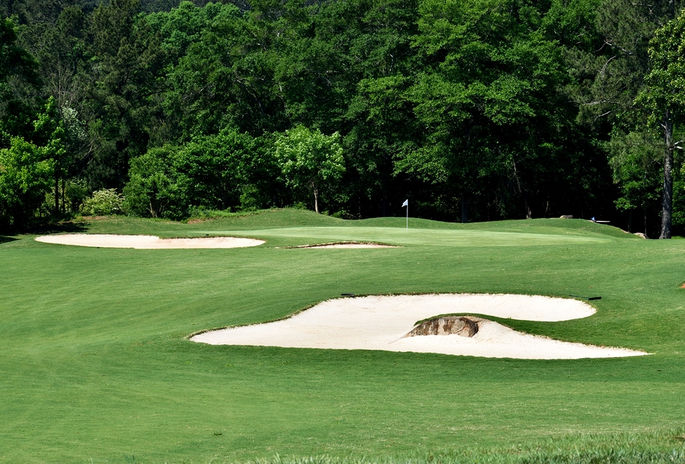
Like two of the other three Majors, the PGA Championship is played at a different course each year. What’s interesting about it is that only eleven times since the tournament began has it ventured towards the west of the USA, although it’s unclear as to why.
The first PGA Championship took place in 1916 at Siwanoy Golf Club, New York. The winner of the event, Jim Barnes, took home $500 for his troubles but, more importantly, also claimed the Wanamaker Trophy. The trophy is still presented to the modern day winner, with the only difference being that it is a replica.
Before The Championship
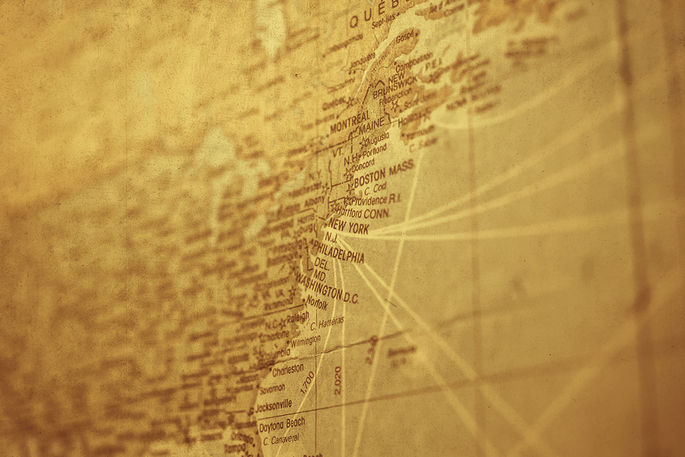
Though the first official PGA Championship took place in the middle of the First World War, the desire for golfers to compete against each other at the highest level had been in place in the US for decades before that. By 1894 there were forty-one different golf courses in operation in the United States, with one such course being the Newport Country Club in Rhode Island. They held an annual competition for amateur golfers ever year, with a rival competition also taking place at St. Andrew’s Golf Club in New York. St. Andrew’s had one over on Newport, however, in that they also ran a concurrent competition for professional golfers.
Though none of the competitions being run were sanctioned by any governing body of golf in America, it showed that there was a desire for a serious competition amongst golfers of all levels. As a result, it led to the creation of the United States Golf Association, which was the country’s first official organisation for the sport. It soon began to catch on to the American psyche, gaining in popularity and becoming one of the country’s most important sports for both causal players and serious competitors. The clamour for a major championship grew and in 1895 the US Open was born under the auspices of the USGA, with the Newport Country Club being the first host venue.
Founding of the Professional Golfers’ Association of America

The US Open abated a small amount of the desire to have a competition that was available for professional golfers to enter, but the presence of amateur players didn’t delight everyone. In the years that followed, the call to start an organisation specifically to look out for the interests of professional golfers grew, with the Professional Golfers Association being formed in February of 1916. It came on the back of a meeting organised by the department store owner Rodman Wanamaker, held at Wykagyl Country Club in New Rochelle, New York. The meeting’s location earned the club the nickname of ‘The Cradle of the PGA’.
Once the PGA had been formed, things moved quickly in terms of organising a competition for its members. The first ever PGA Championship took place in October of the same year, with the Bronxville Siwanoy Country Club acting as the host venue. As well as the aforementioned $500 that was taken home by the first champion Jim Barnes, he was also given a gold medal that was studded with diamonds, which Rodman Wanamaker had donated. To give you some indication of how things have changed over the years, the 2022 winner of the event, Justin Thomas, took home $2.7 million in prize money. The champion gets to keep a replica of the Wanamaker Trophy for a year, plus a smaller version of the same trophy for life.
Moving from Match Play to Stroke Play

When the PGA Championship was first formed it took place as a match play event, meaning that competitors were awarded a point for each hole that the won rather than basing things on their stroke play. It began life being played in what the Americans refer to as early fall, but move around anywhere from May to December. In the wake of the Second World War, however, things were moved to late May or June, before shifting to early July in 1953 and later in the same month the following year. Because the event was match play in its format, it was much harder to decide upon a clear and obvious winner than with stroke play tournaments. As a result, it wasn’t unheard of for the competition’s finalists to play more than two hundred holes across seven days.
In 1957 the competition actually ended up costing the PGA money to run, so the following year a decision was taken to move to the more traditional stroke play used by other Majors at the time. Seventy-two holes would be played across four days, starting on Thursday and running through to Sunday. The format change was, at least in part, brought about because of pressure from network television executives who wanted a group of contenders that would be known to the watching public to be going head-to-head on the final day.
Shifting of Dates Through the Years

As already hinted at, the new championship took time to settle on a date that suited all parties. When the 1960s came about a decision was taken to have the event occur at a time that saw it come hot on the heals of the US Open, meaning that most golfers couldn’t compete in both events so close to each other. In the mid-60s it occurred in August for the first time, moving there semi-permanently in 1969. The main exception to that came in 1971 when it was played in Florida and briefly took place in late February. It has called August its home month ever since, with an exception made in 2016 in order to allow for the Summer Olympics that occurred throughout August, instead taking place two weeks after the Open towards the end of July.
Even so, the PGA Championship has struggled to find its true place in the golfing calendar. In 2017 it was confirmed that it would be moving to May, taking place on the weekend before Memorial Day from 2019 onwards. Meanwhile, the PGA’s Players Championship would be moved to March, having shifted to May in 2007. It’s hoped that that will allow more golf courses to apply to host the event on account of the fact that the weather will be cooler. The PGA Championship has long been referred to with the tagline ‘Glory’s Last Shot, but in 2013 that was altered to ‘The Season’s Final Major’ on the recommendation of the PGA Commission Tim Finchem. It was felt that the idea of suggesting that it was the ‘last shot’ at glory would cheapen the events that came after it, which can include the Ryder Cup.
In 2020, the PGA was played in August and was actually the first major played for thirteen months following the suspension on golf in the spring of that year. The Masters was moved to November, the US Open to September and the Open Championship was cancelled altogether.
Modern Tournament Format
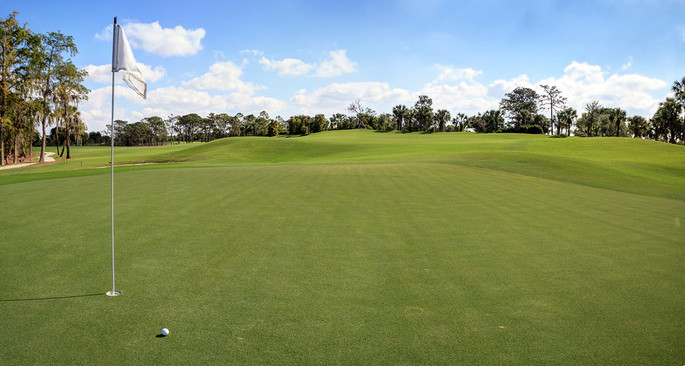
Qualification for the PGA Championship is pretty strict compared to other Majors from around the world. For one thing, amateurs are not invited to play, though they can gain entry by winning one of the other three Majors throughout the year.
The approach to making this exclusively for professionals was something that was implemented from the very first PGA Championship. The tournament was set up to try and exclude the wealthy amateurs from taking over the professional game, allowing them to continue playing the amateur-only tournaments at Newport Country Club and St. Andrew’s, as well as the US Open itself.
The format of the event is eighteen-hole stroke play, which is played over four days from Thursday through to Sunday. After the first thirty-six holes of the first two days play the field is reduced to the top seventy according to where the scores lie. Those seventy players then go on to play over the weekend. Should two or more players be tied at the top of the leader board after seventy-two holes then they will enter a three-hole playoff in order to decide the winner, which moves to sudden-death if still tied after those have been played.
Current Qualification Criteria

As mentioned already, the PGA Championship was specifically created to give professional golfers a top-quality tournament to play in during an era when the sport was mainly the domain of wealthy professionals and was not taken seriously by non-players. That old-style desire of keeping the event separate and distinct from that that invite non-professionals to play remains in place and the PGA Championship is the only one of the four Majors that doesn’t invite amateurs to take part as a matter of course. Amateurs can qualify for the tournament, but in order to do so they either have to win one of the year’s other Majors or win a PGA event whilst playing under an exemption provided by a sponsor. The tournament also reserves twenty of its one hundred and fifty-six places for club professionals, which is the largest amount of any large golfing tournament.
The PGA Tour has been independent of the PGA of America since 1968, which adds a slight bit of confusion into the mix. For clarification, the PGA Championship is run by the PGA of America, the body that represents both teaching and club professionals. The PGA Tour, meanwhile, is an organisation of tournament pros. As a result of this mix of scenarios, the PGA Championship doesn’t offer qualification places to the top fifty players according to the Official World Golf Ranking. That said, the top one hundred players who have not qualified via some other means are typically invited to take part every year. Here’s a look at some of the ways that a golfer can qualify for an invitation to play in the PGA Championship:
- Former PGA Winners
- Winners of the last five US Opens, Masters and British Opens
- Last three Players Championship Winners
- Current PGA Senior Champion
- Lowest Fifteen Scorers and Ties In Previous PGA Championship
- Top Seventy Players In PGA Tour Money Standing
- Most Recent European and US Ryder Cup Team Members
- Any Other Players Deemed Worthy Of An Invite By The PGA of America
The list above is not exhaustive, but it gives you a clear idea of the ways that the one hundred and fifty-six places for the competition are filled every year.
Selecting the Host Course
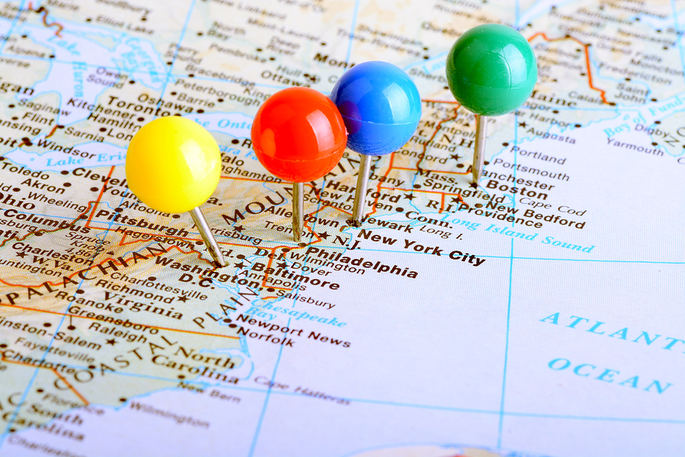
The qualifying criteria for each course that gets to host the PGA Championship isn’t as strict as the other two Majors that move from course to course each year. The Professional Golfers Association likes to make sure that as many courses as possible get a fair crack at hosting the event. Southern Hills Country Club has held the event four times, which is a record.
As mentioned in the introduction, the competition tends to take place on the eastern seaboard of the US, though there’s no particular rhyme or reason to that. In fact, the last time that the event took place in the Pacific time zone of the States was in 1998 when Sahalee Country Club in Seattle welcomed the players of the PGA. Before 2020 at TPC Harding Park in San Francisco, it hadn’t been hosted in California since Riviera Country Club had the honour in 1995.
As with most major tournaments, the PGA Championship’s future host courses have already been decided well into the future. The following are the planned venues up until 2034:
Future PGA Championship Host Courses
| Year | Course | Location | State |
|---|---|---|---|
| 2024 | Valhalla Golf Club | Louisville | Kentucky |
| 2025 | Quail Hollow Club | Charlotte | North Carolina |
| 2026 | Aronimink Golf Club | Newtown Square | Pennsylvania |
| 2027 | PGA Frisco | Frisco | Texas |
| 2028 | Olympic Club | San Francisco | California |
| 2029 | Baltusrol Golf Club | Springfield | New Jersey |
| 2030 | Congressional Country Club | Bethesda | Maryland |
| 2034 | PGA Frisco | Frisco | Texas |
Interesting Facts
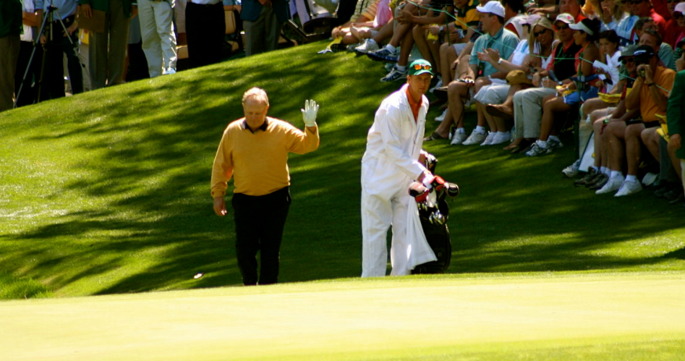
Jack Nicklaus is the most decorated player in PGA Championship history, winning the tournament no fewer than five times. The oldest winner of the tournament, or in fact any major to date, was Phil Mickelson in 2021, aged 50, whilst the youngest was Gene Srazen in 1922, aged 20.
Brooks Koepka holds the record for the lowest total score of 264 strokes, achieved in 2018. Jason Day holds the record for the lowest score under par with -20 in 2015. Interestingly, both these records are the lowest total strokes and under par score in Major history. Rory McIlroy holds the record for the largest winning margin of eight strokes on his way to victory in 2012.
As you might expect from a tournament that is played in America and is exclusively for professionals or high-achieving amateurs, that competition has been dominated by native players over the years. Though the first ever winner of the competition, Jim Barnes, was English and he managed to defend his title in 1919 after the First World War, only three other non-American players won the event during the match play era. It’s also interesting that, of those three, Jock Hutchinson became a naturalised citizen of the US the year that he won it and the same can be said of Tommy Armour when he was victorious ten years later. Only the Australian Jim Ferrier had no connection to the country when he won it in 1947.
The stroke play era began in 1958 as it went on, with a win for the American golfer Dow Finsterwald. The South African Gary Player’s victory in 1962 briefly broke the monotony of US golfers taking home the Wanamaker Trophy, but it then took a decade before a non-American player was victorious and even then it was Player once more. The Australian David Graham’s victory in 1979 was the final time someone not from the States would win the PGA Championship until Wayne Grady won it in 1990. Grady was another Australian to pick up the win, meaning that, alongside Steve Elkington in 1995 and Jason Day in 2015, Australia is the second-most successful country in terms of offering winners of the tournament behind the US itself.
There are more interesting facts, of course, with the following being on the list:
- Southern Hills Country Club has hosted the PGA Championship more than any other club, having done so on five occasions
- Jack Nicklaus has won the tournament the most times in the stroke play era, but Walter Hagen also won it five times when it was a match play event
- Eighteen players have notched up an eighteen-hole score of sixty-three, which is the lowest to date. This includes the likes of Gary Player in the second round in 1984, José María Olazábel in the third round in 2000 and Brooks Koepka and Charl Schwartzel in the second round in 2018. Koepka also repeated this in his first round the following year
- Brooks Koepka’s total score in 2018 is the lowest absolute score over seventy-two holes, scoring 69-63-66-66 for a total of two hundred and sixty-four
- When Phil Mickelson won in 2021 at the age of 50, he became the oldest player to win a major championship
